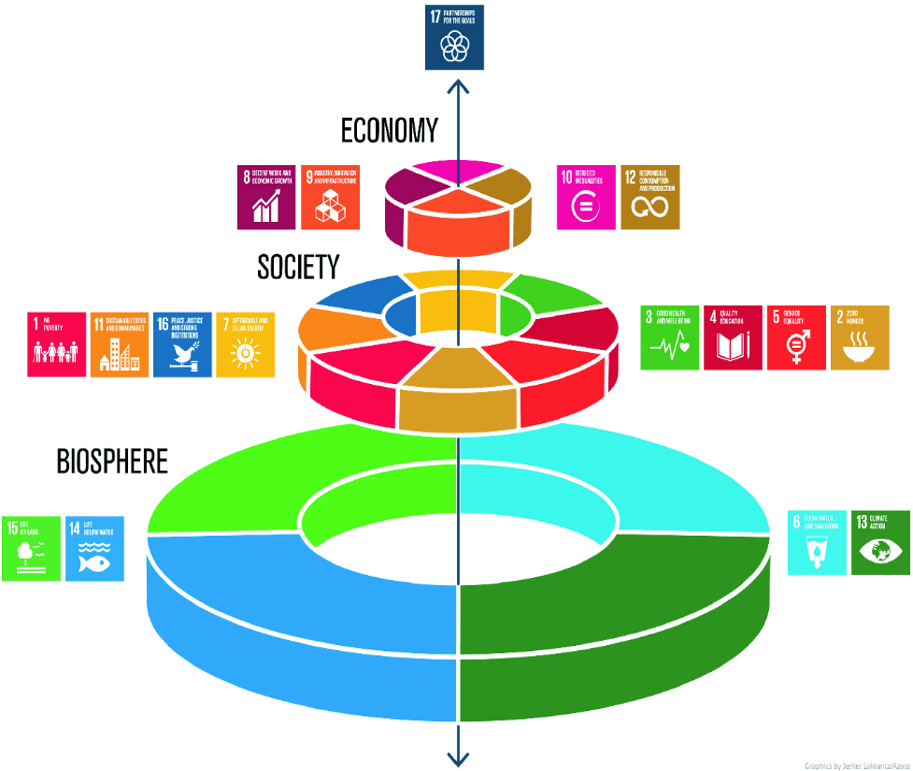How To Map Your Research
Use this self-evaluation tool to map and examine SDGs connections with your research
Directions:
A - Look through the list of SDG in the table below and pick the SDG that most aligns with your work Click on any of the goals to launch a detailed description in your browser which includes specific SDG Targets.
B - Enter a score between 0 to 5 in the "(Module 0-5)" column of the "Map Your Module" table below where:
| Value to Enter | Description |
|---|---|
| 0 | No direct connections to SDGs |
| 1 | Indirectly related to the SDG |
| 2 | Provides insight into the SDG from the perspective of One's Own Discipline |
| 3 | Direct linkage to at least one SDG Target |
| 4 | Inter- or transdisciplinary partnerships to include academic, government, business & NGOs |
| 5 | Expected data directly contributes to at least one SDG Indicator* |
*(see: https://unstats.un.org/sdgs/metadata/)
C - If other SDGs receive a secondary attention in your work, then score as in step B
D - View your spiky radar graphs below. The first graph displays all 17 SDGs while the second displays your top score in the three SDG pillars.
E - Lastly, consider questions in the reflection box below the graph
To start populating the graph press enter on any of the values you have scored between 0 and 5.
You can print or save your results as a PDF. Right Click anywhere on the page and click Print. In the top right where Destination is displayed you can select a printer or Save as PDF.
Map your Module
| Individual SDGs (click link for more info 2) | SDG Pillar | Module (0-5) |
|---|---|---|
| 1: No Poverty | Social | |
| 2: Zero Hunger | Social | |
| 3: Good Health and Well-being | Social | |
| 4: Quality Education | Social | |
| 5: Gender Equality | Social | |
| 6: Clean Water and Sanitation | Environment | |
| 7: Affordable and Clean Energy | Social | |
| 8: Decent Work and Economic Growth | Economy | |
| 9: Industry, Innovation and Infrastructure | Economy | |
| 10: Reduced Inequality | Economy | |
| 11: Sustainable Cities and Communities | Social | |
| 12: Responsible Consumption and Production | Economy | |
| 13: Climate Action | Environment | |
| 14: Life Below Water | Environment | |
| 15: Life on Land | Environment | |
| 16: Peace & Justice Strong Institutions | Social | |
| 17: Partnerships to Achieve SDGs | Social |
Reflection on the Tool
| Reflection on the Tool | |
|---|---|
| 1 | Did you identify at least one SDG covered in your research proposal? Or better yet, at least 1 SDG Target? Is that topic introduced in the context of the wider discipline or societial need (e.g., climate change or biodiversity loss)? |
| 2 | Do you inadvertently cover concepts expressed by the SDGs? If so, how could you signpost those topics to alert reviewers? |
| 3 | Do you perceive interconnections amongst multiple SDG targets and your research questions? Can you develop a narative or rationale for those connections? |
| 4 | Do you cover SDGs from more that one SDG Pillars as displayed in the second graph? Are there opportunites to include transdisciplinary collaborators? (see figure below) |

The figure above is often called the wedding cake image of the SDGs. It represents the Environment or Biosphere being the foundation of our society and our natural capital through ecosystem services. The next layer is Social and is unified by the premise of leaving nobody behind and everyone having dignity and equal opportunity. The Economic layer is driven by inclusive growth within safe operating parameters. The pinnacle expresses the partnerships needed to advance the SDG targets such as between private and public sectors or the global north and south.


